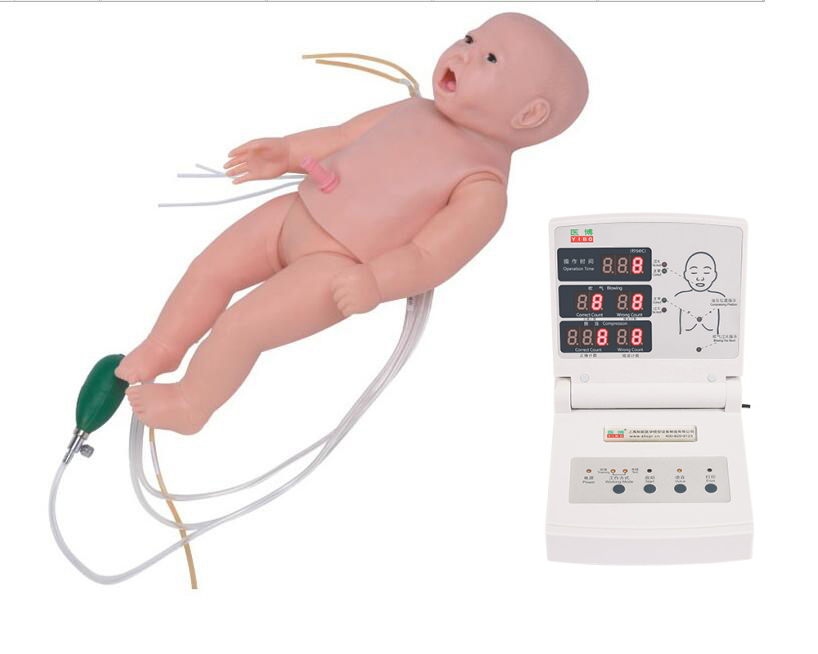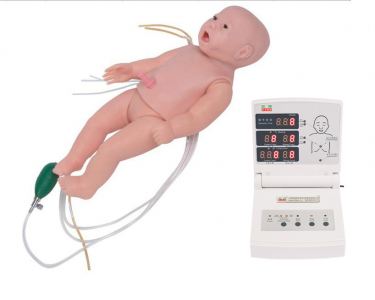As an advanced medical teaching tool, advanced infant nursing model provides a very realistic operating environment for clinical neonatal nursing training. The following is a detailed introduction to its advanced features:

Advanced simulation design:
Skin material: The advanced baby care model is usually made of imported PVC plastic material through the mold casting process, making the skin soft and elastic, real touch, not easy to deform.
Anatomical structure: The model is designed according to the real anatomical characteristics of newborns, such as the image of the fore and rear fontanel, coronal suture, sagittal suture, and realistic mouth, nose, tongue, gum, pharynx, larynx, esophagus, epiglotis, trachea and other structures, providing an excellent simulated operating environment for medical staff.
Multi-functional care operation:
General care: The model supports general care operations such as bathing, breastfeeding, changing clothes, and changing diapers to help medical staff master daily care skills.
Intravenous infusion/puncture: The arm vein and scalp vein of the model can be trained for intravenous infusion/puncture, such as brachial vein, superficial dorsal vein of hand, superior frontal vein, superficial temporal vein, femoral vein, etc., which helps to improve the level of venous operation of medical staff.
CPR operation training: The model supports mouth-to-mouth, mouth-to-nose, simple respirator mouth-to-mouth and other ventilation methods, and electronically monitors key indicators such as blowing frequency, blowing volume, press times, press frequency, press depth, etc., to provide comprehensive cardiopulmonary resuscitation training for medical personnel.
Intelligent feedback system:
Voice prompt: Some advanced infant care models have voice prompt function, which can simulate different states of infants (such as hunger, wet urine, fear, etc.), and guide the medical staff to conduct corresponding operations through voice prompt.
Electronic monitoring: The model can monitor the operation process of the medical staff in real time, such as the frequency of blowing and the depth of pressing in the CPR operation, and give corresponding feedback and suggestions to help the medical staff improve the operation skills.
Replaceable parts:
Breast skin change: The model supports breast skin change and can simulate babies of different genders or perform special care operations as needed.
Umbilical cord simulation: The model is equipped with a removable umbilical cord that simulates the operation of umbilical cord care, providing a real training experience for medical staff.
Maintenance and maintenance:
Advanced baby care models are generally easy to clean and maintain, and should be stored in a cool, dry place when not used for long periods of time to extend their service life.
In summary, the Advanced Infant Care model provides an excellent clinical neonatal care training experience for healthcare professionals with advanced features such as advanced simulation design, multi-functional care operation, intelligent feedback system, and replaceable parts.

